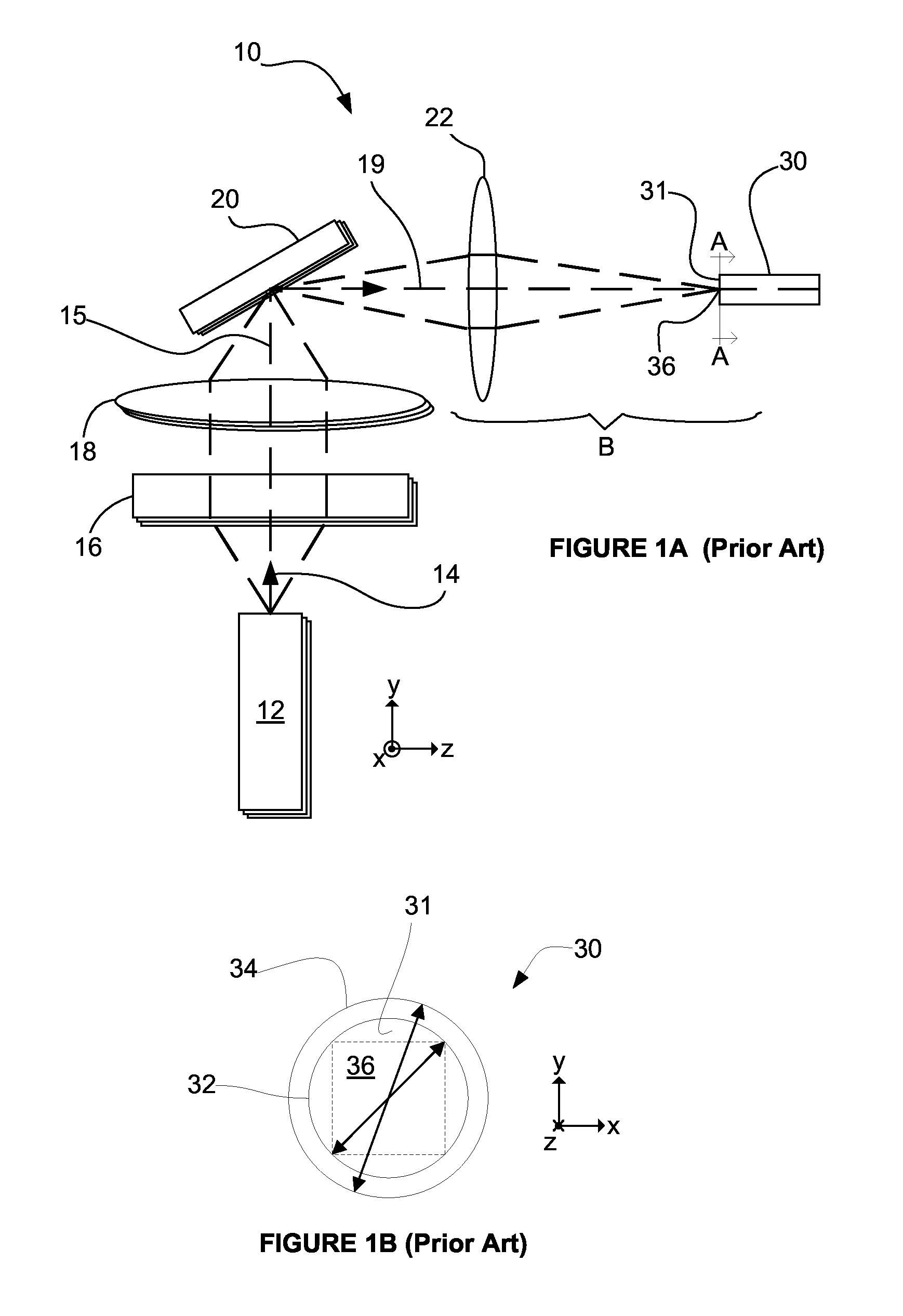Brightness multi-emitter laser diode module and method
a laser diode module and multi-emitter technology, applied in the direction of optical elements, semiconductor lasers, instruments, etc., can solve the problems of unfavorable bpps in either axis, fiber-coupled laser diode modules still do not reach their theoretically achievable brightness, and most multi-mode fiber-coupled diodes have relatively poor brightness. achieve the effect of improving the brightness performance of multi-emitter laser diode modules
- Summary
- Abstract
- Description
- Claims
- Application Information
AI Technical Summary
Benefits of technology
Problems solved by technology
Method used
Image
Examples
Embodiment Construction
[0044]While preferred embodiments may be illustrated or described, they are not intended to limit the invention. Rather, numerous changes including alternatives, modifications and equivalents may be made as would be understood by the person skilled in the art. Ultimately, the invention is defined by the appended claims.
[0045]The present disclosure improves the brightness performance of existing multi-emitter diode laser modules by modifying the fast-axis optics to include a short focal length fast axis Fourier transform before the beam spot (or fiber tip if the module is fiber-coupled). This improves how sharply or steeply the near field power intensity distribution in the fast axis slopes. Increasing the slope of the fast axis near-field intensity distribution is effected by an additional transforming lens feature performing an extra Fourier transform in the fast axis, so that a steep sloped top-hat distribution is presented in the fast-axis near field. Concurrently, a more gradual...
PUM
 Login to View More
Login to View More Abstract
Description
Claims
Application Information
 Login to View More
Login to View More - R&D
- Intellectual Property
- Life Sciences
- Materials
- Tech Scout
- Unparalleled Data Quality
- Higher Quality Content
- 60% Fewer Hallucinations
Browse by: Latest US Patents, China's latest patents, Technical Efficacy Thesaurus, Application Domain, Technology Topic, Popular Technical Reports.
© 2025 PatSnap. All rights reserved.Legal|Privacy policy|Modern Slavery Act Transparency Statement|Sitemap|About US| Contact US: help@patsnap.com



